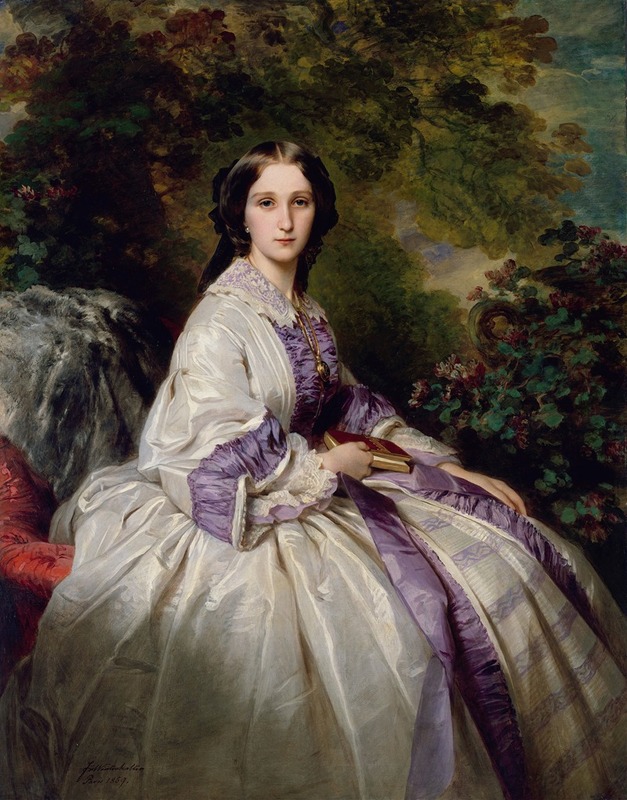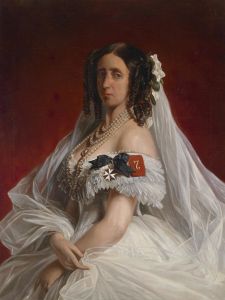
Countess Alexander Nikolaevitch Lamsdorff
A hand-painted replica of Franz Xaver Winterhalter’s masterpiece Countess Alexander Nikolaevitch Lamsdorff, meticulously crafted by professional artists to capture the true essence of the original. Each piece is created with museum-quality canvas and rare mineral pigments, carefully painted by experienced artists with delicate brushstrokes and rich, layered colors to perfectly recreate the texture of the original artwork. Unlike machine-printed reproductions, this hand-painted version brings the painting to life, infused with the artist’s emotions and skill in every stroke. Whether for personal collection or home decoration, it instantly elevates the artistic atmosphere of any space.
Franz Xaver Winterhalter was a renowned 19th-century German painter, celebrated for his portraits of royalty and aristocracy across Europe. One of his notable works is the portrait of Countess Alexander Nikolaevitch Lamsdorff. This painting exemplifies Winterhalter's signature style, characterized by its elegance, attention to detail, and the ability to capture the grace and poise of his subjects.
Winterhalter was born on April 20, 1805, in the small village of Menzenschwand in Germany's Black Forest region. He studied art in Munich and later moved to Paris, where he established himself as a leading portraitist. His career flourished as he became the preferred painter for many European courts, including those of France, England, and Russia.
The portrait of Countess Alexander Nikolaevitch Lamsdorff is a testament to Winterhalter's skill in portraying the high society of his time. The countess, a member of the Russian aristocracy, is depicted with a sense of refinement and sophistication that was typical of Winterhalter's work. The painting captures the luxurious fabrics and intricate details of her attire, reflecting the fashion and opulence of the era.
Winterhalter's portraits were known for their idealized yet realistic representation of his subjects. He had a unique ability to flatter his sitters while maintaining a sense of authenticity, which made his work highly sought after by the elite. His use of light and shadow, combined with his meticulous attention to detail, brought a lifelike quality to his paintings that was admired by his contemporaries.
The portrait of Countess Lamsdorff is no exception. It showcases Winterhalter's mastery in rendering textures, from the softness of the countess's skin to the sheen of her gown. The background is often understated in Winterhalter's portraits, drawing the viewer's focus to the subject, and this painting follows that tradition.
Winterhalter's work, including the portrait of Countess Lamsdorff, played a significant role in documenting the fashion and social dynamics of the 19th-century European aristocracy. His paintings provide a window into the lives of the elite during a time of great political and cultural change.
Throughout his career, Winterhalter received numerous commissions from royal families and nobility, which solidified his reputation as one of the leading portraitists of his time. His ability to capture the essence of his subjects with grace and elegance ensured that his work remained popular and influential long after his death on July 8, 1873.
The portrait of Countess Alexander Nikolaevitch Lamsdorff remains a fine example of Winterhalter's artistic legacy, showcasing his exceptional talent and his contribution to the art of portraiture. His works continue to be celebrated in museums and collections around the world, appreciated for their beauty and historical significance.


















